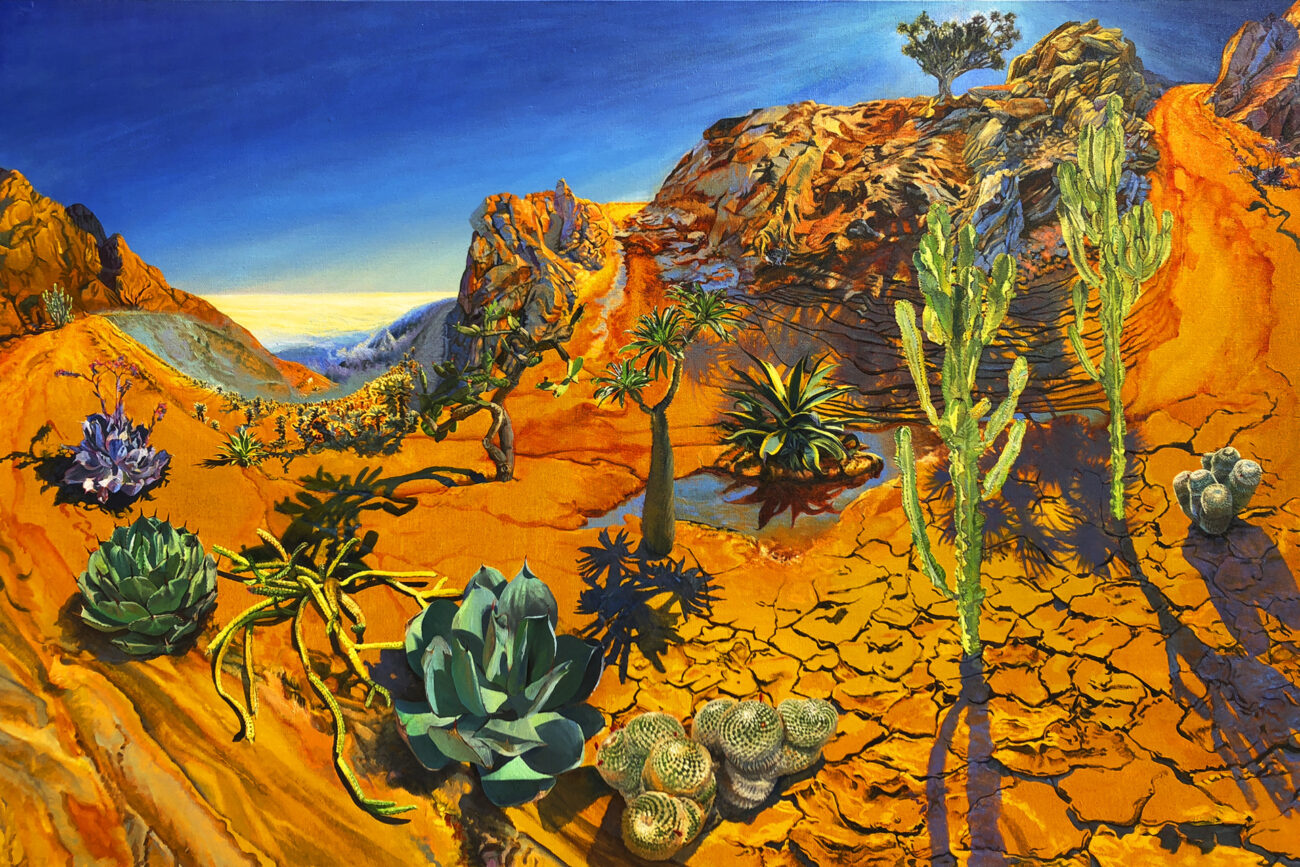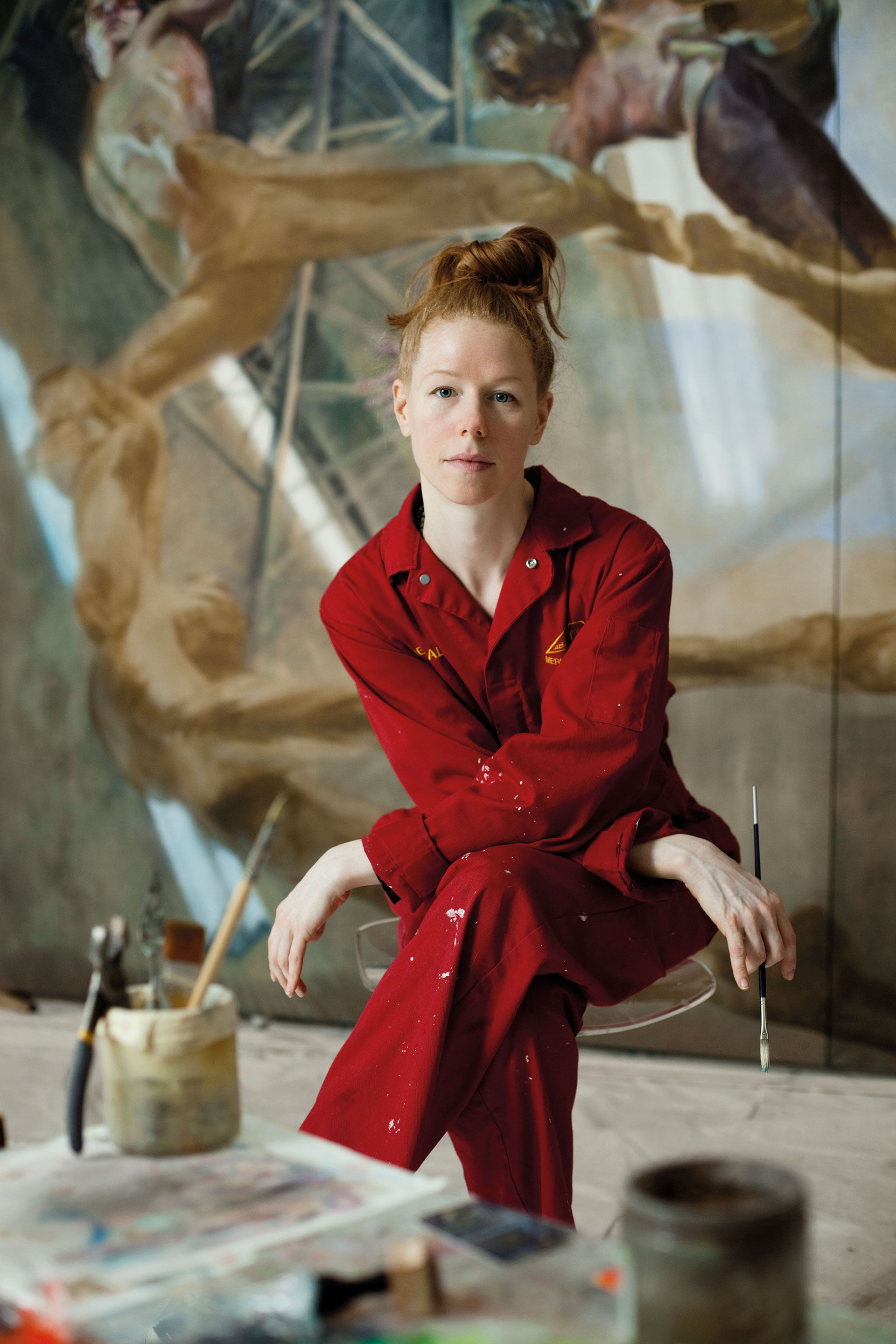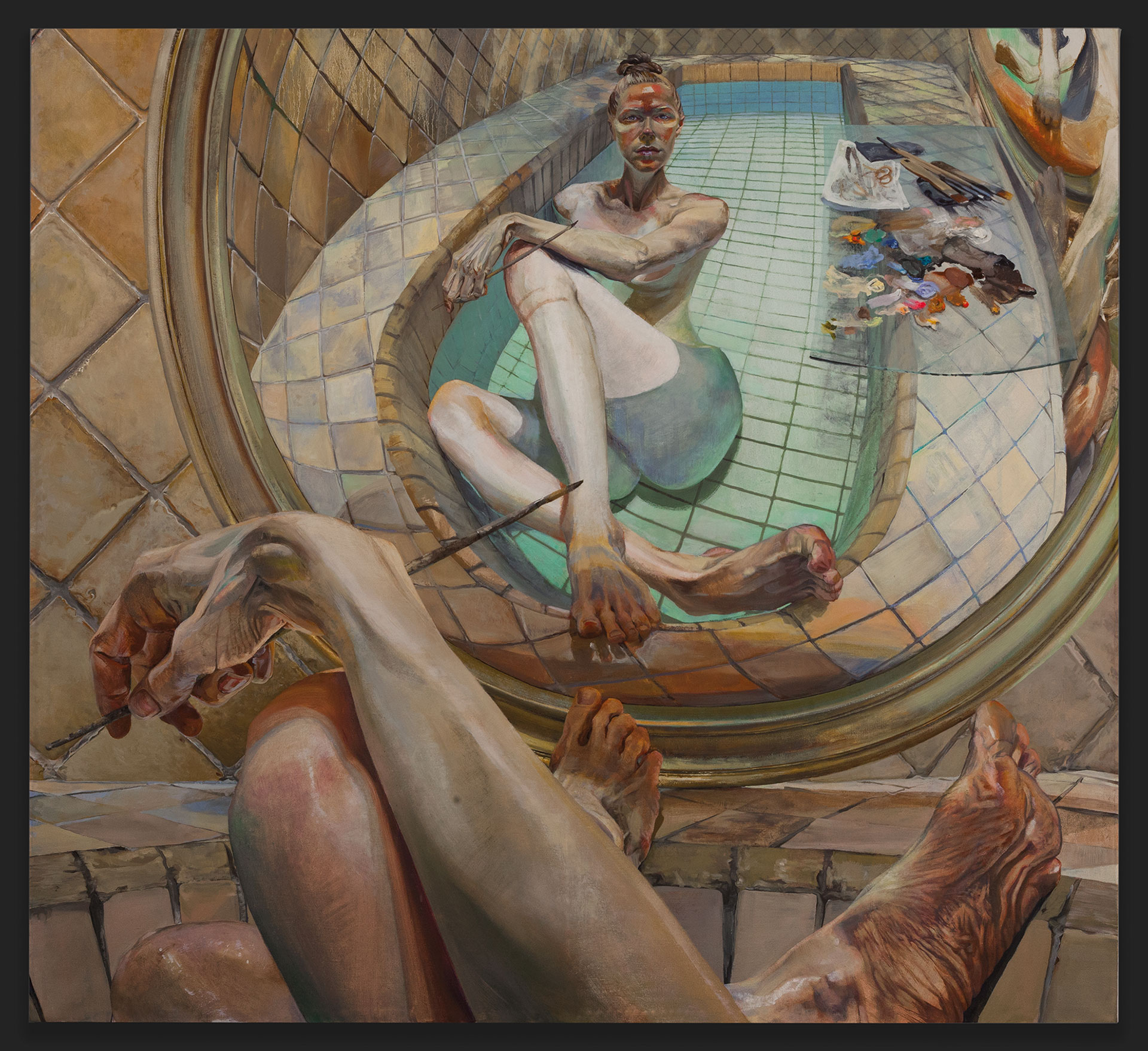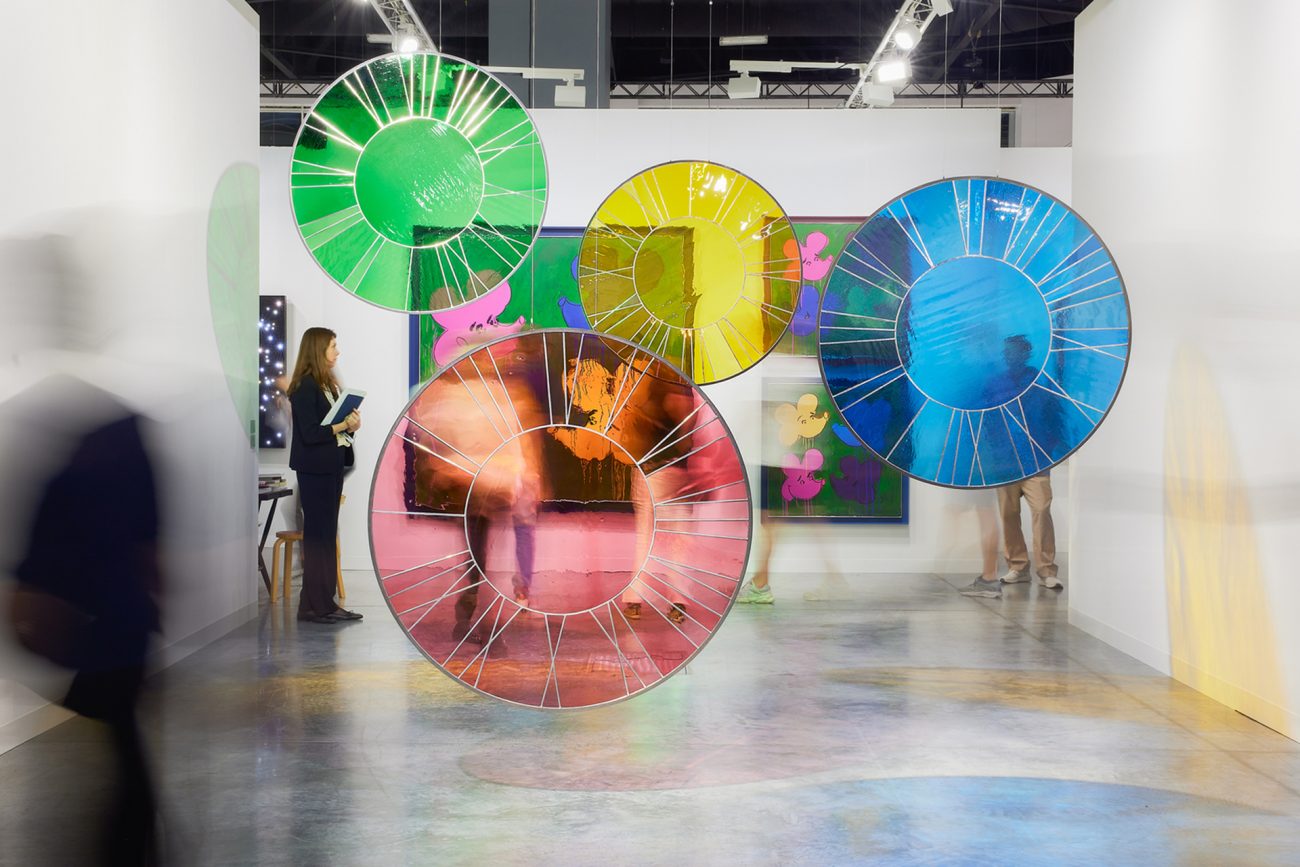In the studio with Gerri Davis

Gerri Davis is a painter, but NASA could almost have used her as a scientist. Her paintings are incredibly cool and challenging; they are pushing the boundaries in their field. An afternoon in the studio, going over the works for her upcoming show at Le Salon H, led to an interesting discussion.
Your work features amazing close-ups, where things are dramatically enlarged. But you also paint epic compositions, where things are actually smaller than in reality. Could you talk about your relationship to scale?
The world you see around this magazine that you are holding: the room, the lights, your body, a table perhaps, is actually an enormous view. I’m interested in squeezing that enormity into the confines of the rectangular, two-dimensional frame of a painting. Maximizing the relationship in scale between two things can cause one thing to feel much closer and the other much farther away, so it’s a natural by-product of my attempts to compress more into the frame than should logically fit into the confines of a little square on the wall.
Your paintings often seem to subvert gravity; how did you arrive at that way of looking at the world?
I grew up in a NASA neighbourhood filled with astronauts, so gravity was never something I took for granted. Later, I trained as an architect. The systems of representation used in that field allow points of view to be anywhere from underneath to overhead—underground to aerial. This caused me to become acclimated to abnormal vantages. In my work, being a pair of eyes 5’2” above the floor is not a given.
It seems that you pick up the exploration of the laws of optics where the Renaissance masters left off. Your paintings explore playfully and very daringly the meaning of these laws when it comes to representing the world we see.
As a way of exploring the fullness of perception, I devise ways to paint time that often upend the optical rules. This hopefully incites new ways of seeing that we may take with us into the world and that heighten our appreciation for temporal aspects of our biological field of view we might sometimes take for granted.
You experiment with all sorts of approaches to portrayal, by painting… yourself! Are you your easiest model?
I suppose anytime a painter prepares to paint, there is also a model preparing to be mostly motionless for some extended time. When painter and model are combined, there is a synchronized dedication between subject and artist. Additionally, the depiction of a face absorbed in the act of study invokes an unselfconscious expression. The blankness with which we approach our phones reminds me of that openness. I’m working on a series of paintings that explore that ubiquitous blank stare into a glowing monitor.
Regarding self-portraiture, what really interests me about painting my reflection is the juxtaposition of various iterations of a face over time—how each portrait represents the intersection of a complex relationship between internal psychological and external physical landscape, and the interpretive mechanism driving the experience of making the painting. This varying interplay produces a series of paintings of one person that appear as if they could be many people. It’s possible our identities are not as easily defined as we like to think.
Text: Barbara Stehle
Photos: Wetted Desert, 2018. Oil on linen, 127 x 190.5 cm. Private collection, Beverly Hills, CA. © Courtesy of the artist
Portrait in the Studio in front of The Dance (in progress). © Claudia Hehr, 2012
Bather II, 2015. Oil on canvas, 152.4 x 168 cm. Private collection, Milan, Italy. © Courtesy of the artist








